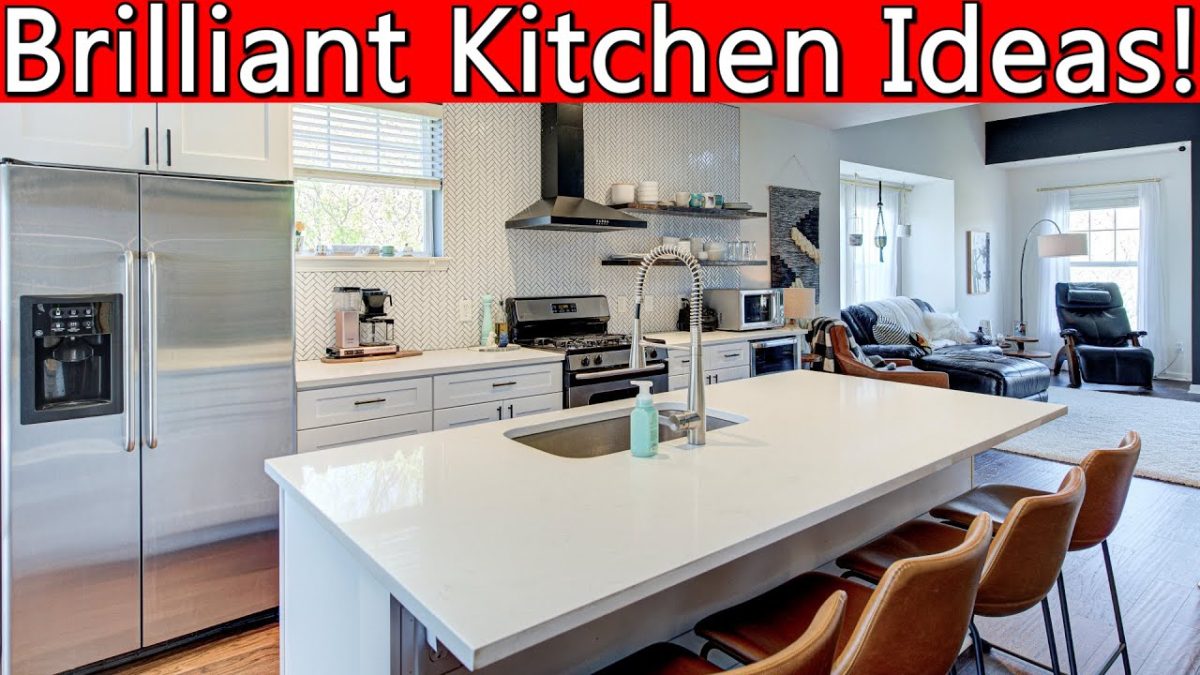Remodeling your kitchen is not just about giving it a fresh look. It’s about creating a space that reflects your style, enhances the functionality of your home, and adds value to your property. While the idea of remodeling can be exciting, the process can be overwhelming. That’s where a checklist comes into play. A well-thought-out checklist ensures that every aspect of the remodel is considered, and nothing is overlooked.
Key Takeaways:
- A checklist provides a structured approach to kitchen remodeling.
- It ensures that all aspects, from budgeting to design choices, are considered.
- A checklist can save time, money, and reduce stress during the remodeling process.
Why a Checklist is Crucial for Kitchen Remodeling
Planning and Budgeting
A checklist helps in outlining the scope of the remodel. It aids in determining what needs to be changed, what can be retained, and what new elements you want to introduce. This clarity is crucial when setting a budget.
Design and Functionality
Your kitchen should be a blend of aesthetics and functionality. A checklist ensures that while you focus on design, the functionality isn’t compromised. It reminds you to consider the workflow, storage solutions, and ergonomics of the kitchen.
Avoiding Common Mistakes
Mistakes during remodeling can be costly. A checklist acts as a safety net, ensuring that common oversights like not measuring appliances or forgetting about the electrical outlets are avoided.
Incorporating Trends and Personal Style
While it’s essential to incorporate current trends, your kitchen should reflect your personal style. A checklist can help balance the two, ensuring that while your kitchen is modern, it still feels like a part of your home.
Choosing the Right Professionals
A significant part of the remodeling process is choosing the right professionals. Whether it’s designers, contractors, or suppliers, a checklist ensures you ask the right questions and make informed decisions.
Ensuring Compliance
Your remodeled kitchen should comply with local building codes and regulations. A checklist ensures that all necessary permits are obtained, and the remodel meets all required standards.
Monitoring Progress
A checklist is not just for planning. It’s also a tool to monitor the progress of the remodel. It ensures that the project stays on track and any deviations are addressed immediately.
Post-Remodel Checklist
Once the remodel is complete, there’s still work to be done. A post-remodel checklist ensures that all work is up to the mark, all appliances are working, and the space is ready for use.
While a kitchen remodel can be a significant investment in terms of time, effort, and money, a well-planned checklist can make the process smoother. It ensures that the end result is a kitchen that is not just beautiful but also functional, adding value
Read This Kitchen Remodel Checklist
Kitchen Remodeling Checklist
Planning and Design:
- Determine the purpose of the remodel (e.g., update the look, increase functionality, improve energy efficiency).
- Set a budget, including a contingency fund for unexpected expenses.
- Research kitchen design trends and gather inspiration.
- Decide on a layout that maximizes space and flow.
- Consider the kitchen work triangle (sink, stove, refrigerator) in your design.
- Choose a design style (e.g., modern, traditional, farmhouse).
- Decide if you’ll live in the home during the remodel or temporarily relocate.
2. Professional Consultation:
- Hire or consult with an architect or kitchen designer.
- Get estimates from contractors.
- Check references and reviews of professionals you consider hiring.
- Secure necessary permits from local authorities.
3. Demolition:
- Remove old cabinets, countertops, and appliances.
- Take down walls or partitions if expanding or changing the layout.
- Dispose of or donate old materials responsibly.
4. Electrical and Plumbing:
- Update or install new electrical outlets and switches.
- Ensure electrical circuits can handle new appliances.
- Reroute or update plumbing if changing the location of the sink or dishwasher.
- Install under-cabinet lighting.
5. Walls and Flooring:
- Repair or replace drywall.
- Paint or wallpaper the walls.
- Choose and install new flooring (e.g., tiles, hardwood, laminate).
6. Cabinets and Countertops:
- Decide between custom, semi-custom, or stock cabinets.
- Choose a countertop material (e.g., granite, quartz, laminate).
- Install new cabinets and countertops.
7. Appliances:
- Choose energy-efficient appliances.
- Install a new stove, refrigerator, dishwasher, and microwave.
- Consider specialty appliances like wine coolers or warming drawers.
8. Sink and Faucet:
- Decide on sink material (e.g., stainless steel, porcelain, granite composite).
- Choose a faucet style and finish.
- Install the sink and faucet.
9. Backsplash:
- Choose a backsplash material (e.g., tiles, stone, glass).
- Install the backsplash.
10. Finishing Touches:
- Install cabinet hardware (knobs, pulls).
- Add window treatments.
- Install light fixtures.
- Decorate with accessories like rugs, wall art, and plants.
11. Inspection and Quality Check:
- Ensure all installations meet local building codes.
- Check the functionality of appliances, outlets, and faucets.
- Address any issues or corrections with the contractor.
12. Final Steps:
- Clean the kitchen thoroughly.
- Move back into the kitchen.
- Celebrate your newly remodeled space!



